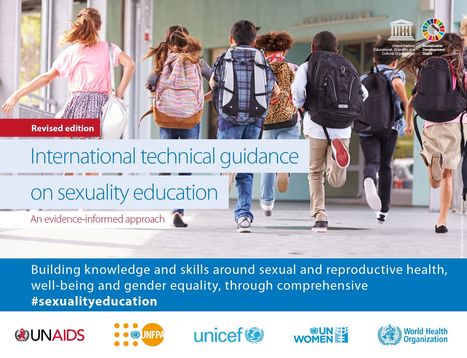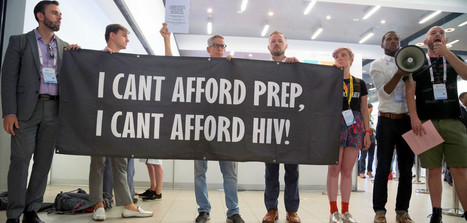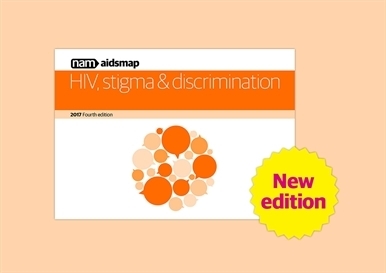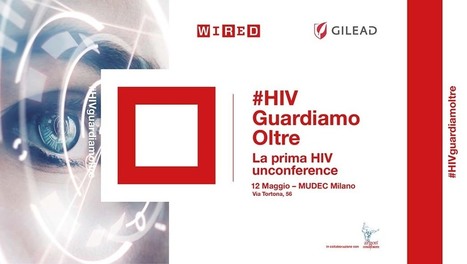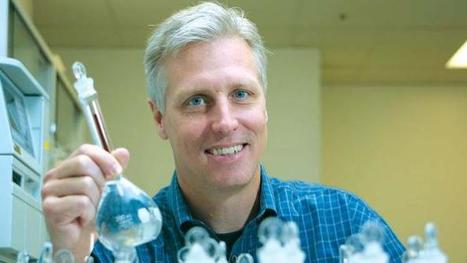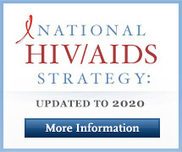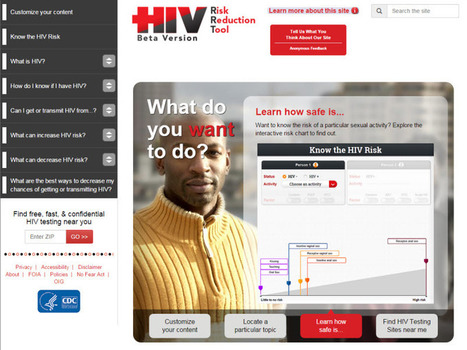 Your new post is loading...
 Your new post is loading...
Receiving an HIV diagnosis can change your life overnight and will probably stir up a cocktail of emotions. However, reading blogs written by other people who have HIV and healthcare professionals can help you understand you're not alone. HIV blogs, written by those with HIV and healthcare professionals, can provide coping strategies and support.HIV now affects roughly 1.1 million people in the United States, and of these, roughly 1 in 7 won't know that they have it. Research and improved treatments are now enabling more and more people with HIV to lead better-quality lives and live longer than ever before. Though therapies for HIV have come on in leaps and bounds, if the condition progresses, it is still a "significant cause of death" among specific populations. If HIV is left untreated, it may develop into AIDS — which was responsible for around 6,721 deathsin 2014. If your condition is properly managed by taking medication, avoiding illness, and making healthful lifestyle choices, you will be able to lead a near-normal life with HIV. Getting support from friends, family, and specialist organizations is also important. Blogs written by medical professionals who specialize in HIV and those who have been through similar experiences as you are out there and may provide support and tips for coping with the condition on a daily basis. Medical News Today have selected the 10 best blogs for HIV and AIDS.
Comprehensive sexuality education (CSE) plays a central role in the preparation of young people for a safe, productive, fulfilling life in a world where HIV and AIDS, sexually transmitted infections (STIs), unintended pregnancies, gender-based violence (GBV) and gender inequality still pose serious risks to their well-being. However, despite clear and compelling evidence for the benefits of high-quality, curriculum-based CSE, few children and young people receive preparation for their lives that empowers them to take control and make informed decisions about their sexuality and relationships freely and responsibly. Many young people approach adulthood faced with conflicting, negative and confusing messages about sexuality that are often exacerbated by embarrassment and silence from adults, including parents and teachers. In many societies, attitudes and laws discourage public discussion of sexuality and sexual behaviour, and social norms may perpetuate harmful conditions, for example gender inequality in relation to sexual relationships, family planning and modern contraceptive use. A significant body of evidence shows that CSE enables children and young people to develop: accurate and ageappropriate knowledge, attitudes and skills; positive values, including respect for human rights, gender equality and diversity, and, attitudes and skills that contribute to safe, healthy, positive relationships (see Section 4 – The evidence base for comprehensive sexuality education).
BackgroundThe peer-led, social media-delivered intervention is an emerging method in sexual health promotion. However, no research has yet investigated its effectiveness as compared with other online channels or in an Asian population. ObjectiveThe objective of this study is to compare a peer-led, social media-delivered, safer sex intervention with a sexual health website. Both conditions target Chinese college students in Hong Kong. MethodsA randomized controlled trial was conducted with a peer-led, safer sex Facebook group as the intervention and an existing online sexual health website as the control. The intervention materials were developed with peer input and followed the information-motivation-behavioral skills model; the intervention was moderated by peer educators. The participants filled out the online questionnaires before and after the 6-week intervention period. Outcome evaluations included safer sex attitudes, behavioral skills, and behaviors, while process evaluation focused on online experience, online-visiting frequency, and online engagement. The effect of online-visiting frequency and online engagement on outcome variables was investigated. ResultsOf 196 eligible participants—100 in the control group and 96 in the intervention group—who joined the study, 2 (1.0%) control participants joined the Facebook group and 24 of the remaining 194 participants (12.4%) were lost to follow-up. For the process evaluation, participants in the intervention group reported more satisfying online experiences (P<.001) and a higher level of online-visiting frequency (P<.001). They also had more positive comments when compared with the control group. For outcome evaluation, within-group analysis showed significant improvement in condom use attitude (P=.02) and behavioral skills (P<.001) in the intervention group, but not in the control group. No significant between-group difference was found. After adjusting for demographic data, increased online-visiting frequency was associated with better contraceptive use behavioral intention (P=.05), better behavioral skills (P=.02), and more frequent condom use (P=.04). ConclusionsA peer-led, social media-delivered, safer sex intervention was found to be feasible and effective in improving attitudes toward condom use and behavioral skills, but was not significantly more effective than a website. Future research may focus on the long-term effectiveness and cost-effectiveness of this popular method, as well as the potential cultural differences of using social media between different countries.
R Moretti1*, M Cremaschini1, G Brembilla1, F Fenili1, MN Gambirasio2, M Valoti1, M Bardus3, L Suzanne Suggs3 and G Barbaglio4
1Lombardy Region, Local Health Authority of Bergamo, Health Promotion Service
2Policlinico S.Pietro, Unit of Internal Medicine. Ponte San Pietro Bergamo
3University of Italian Switzerland, Faculty of Communication Sciences
4Lombardy Region, Local Health Authority of Bergamo, Health Director
The first AIDS drug was approved on March 19, 1987—but getting there was by no means easy. Here's the story behind the treatment.
But lung cancer risk remains high after 5 years of cessation. A year after quitting smoking, patients infected with human immunodeficiency virus (HIV) have risk for most cancers that is about the same as non-smokers – the exception is lung cancer, which remains elevated through 5 years, researchers reported here. One year after smoking cessation, lung cancer risk among HIV patients was 11 times that of non-smokers, and after 5 years, that risk is still 8 times that of non-smokers, said Leah Shepherd, MPH, a statistician in the Department of Infection and Population Health, University College London.
New York City’s strategy to end the AIDS epidemic is firmly rooted in science, was developed in conjunction with community activists, and has support from top-level political leaders, Demetre Daskalakis told the 2017 Conference on Retroviruses and Opportunistic Infections (CROI) in Seattle this week. “When you combine political will, biological interventions and harm reduction, you can get to zero,” he said. Dr Daskalakis is an unusual public health figure: an infectious disease physician who has delivered testing and vaccination in sex clubs and describes himself as a “queer health warrior”. He is now the deputy commissioner for disease control in the New York City Department of Health and is the architect of the city’s “ending the epidemic” initiative. The strategy places particular emphasis on identifying undiagnosed individuals and linking them to healthcare; retaining people in care to maximise virus suppression; and facilitating access to pre-exposure prophylaxis (PrEP). Mayor Bill de Blasio and Governor Andrew Cuomo have given political and budgetary support to the initiative, facilitating implementation by a range of government agencies.
The Centers for Disease Control and Prevention is making a big push to get more people at "substantial" risk of getting HIV to start on a daily pill that has been shown to dramatically reduce their risk of infection. Known as PrEP or pre-exposure prophylaxis, the therapy involves taking a daily pill — Truvada — that makes it more difficult for the virus to establish a permanent infection when a person is exposed to it through sexual contact or injectable drug use. Studies have shown that it can reduce risk by 70 to more than 90 percent. In stunning results released in one study in September, researchers found that 100 percent of participants taking HIV prevention pill Truvada remained infection-free for two years. The study, conducted at Kaiser Permanente in San Francisco, involved more than 600 high-risk individuals, most of whom were men who have sex with men. PrEP is considered to be among the world's most powerful weapons in ending the AIDS epidemic. Despite numerous advances in fighting the disease in recent decades, HIV remains one of the most devastating health issues in the United States. More than 1 million Americans are living with HIV, and more than 40,000 are newly infected each year. In September, the World Health Organization radically revised its guidelines for those who should be on HIV anti-retrovirals — greatly expanding the number of those who should be in treatment from 28 million to 37 million.
Presentation at the 2016 Asian Medical Students' Conference of AMSA International, 30 June 2016.
What are the latest attempts to fight against a disease which claims over 8 million lives a year?
US Vice President Joe Biden issued a call to action at Davos in January. The world needs to step up its game in the fight against cancer, he said, and it needs to start now. "Our goal," he said, "is to make a decade's worth of advances in five years ... and eventually end cancer as we know it." Today, World Cancer Day, is a chance to reflect on a disease that claims over 8 million lives annually, and take steps towards the dream of ending it.
Purpose– This study aims to explore peoples cognitive perceptions of HIV and other sexually transmitted diseases (STDs) to inform decisions on message development with regard to message bundling, with limited research on the concept of bundling-related prevention messages and no studies that consider the bundling of HIV and other STD prevention messages.Design/methodology/approach– Individual and small-group interviews were conducted with 158 African American men and women to explore perceptions of STDs and communication preferences. Open-ended questions and a pile-sort exercise were used to elicit individuals’ judgments on similarities of 12 STDs, including HIV. Interview data were coded and analyzed for themes and patterns; pile sort data were analyzed using multidimensional scaling (MDS) and cluster analysis to visualize the set of relations identified from the piles.Findings– STDs and HIV are associated with stigma, risk behaviors and personal responsibility. The card sorting activity revealed two primary dimensions by which people organized STDs: seriousness and curability. Potential clusters of STDs that correspond to participants described sorting strategies were identified and they may have implications for message bundling. Disaggregation of the data by sex and age revealed slight variations in the relationships of HIV and human papillomavirus (HPV) to other STDs.Originality/value– By identifying a set of cognitive attributes people use in organizing the overall semantic domain of STDs, ideas can be generated for how best to combine STD and HIV messages to meet public health communication goals.
|
“I am going to fight them, my patients are going to fight them, and you goddamn well better fight them!” —Dr. Suzanne Phillips in a clip from How to Survive a Plague It was August 1994, and TAG, the Treatment Action Group (I was a cofounder), had become the most hated AIDS organization in the country, while TAG member Spencer Cox had become the most hated AIDS activist. Hated by other AIDS activists. The “them” in Suzanne Phillips’s rallying cry above were TAG’s activists, and she was railing against “the boys” during a weekly ACT UP meeting after we had shocked “AIDS Inc.” with a letter to the Food and Drug Administration (FDA) asking them not to grant accelerated approval to saquinavir, one of the first protease inhibitors. We felt that Hoffmann-La Roche, its manufacturer, was abusing the accelerated approval process by rushing saquinavir to market before showing how it could be used in combination with previously approved drugs to extend lives. But by this time in the crisis, the status quo of AIDS patient advocacy, driven by the demands of HIV-positive gay white men (often with their gay doctors) in San Francisco and New York, was “just give us the drugs now and we’ll figure out how to use them.” While this approach undoubtedly prolonged the lives of many proactive patients with expert docs who attended all the AIDS conferences, it was bound to be a long-term public health fiasco, offering little guidance on best practices for the vast majority of people living with HIV outside of these white gay enclaves.
The HIV, stigma & discrimination booklet The HIV, stigma & discrimination booklet is for people living with HIV and explains what stigma and discrimination are, makes some suggestions for how to deal with these problems and gives information about your legal rights. The booklet includes quotes from people living with HIV about their personal experiences of stigma and discrimination, how these experiences have made them feel, and how they’ve responded. The quotes were collected from feedback to NAM and from The People Living With HIV Stigma Survey UK. The booklet includes sections on: NAM’s Patient Information Subscription Scheme UK-based HIV and GUM clinics can order copies of HIV, stigma & discrimination, as well as our other booklets and leaflets in the series The basics, through our online portal as part of their patient information subscription. To find out if your clinic is registered or for information on joining the scheme, please email info@nam.org.uk or call 020 7837 6988. Thank you! Thanks to the people living with HIV and members of our review panel for their assistance in updating and reviewing this booklet. In particular: Alastair Hudson, FPA; Christabel Kunda, NAZ; Robert James; Irina Lut, FPA; Vincent Manning, Catholics for AIDS Prevention and Support. NAM is grateful to Stigma Survey UK for permission to reproduce the quotes used in the booklet. We are also grateful to Janssen and Wandsworth Oasis for funding towards the production of this resource. Our funders have had no control over the design or content of the booklet.
The game-changing HIV prevention drug PrEP looks set to be subsidised on the Pharmaceutical Benefits Scheme (PBS), making it far more accessible and affordable for thousands of users in Australia. The Pharmaceutical Benefits Advisory Committee (PBAC) will likely advise the government to list Truvada, the commercial name for PrEP, at some stage tomorrow, to ensure it is publicly subsidised. Despite being proven to be 99 per cent effective at preventing the transmission of HIV, it currently costs hundreds of dollars for a prescription, forcing many to import it from overseas. Through trials in states such as Victoria, New South Wales, and Queensland, many have been given access to the drug, though a PBS listing would see it become more widely available and affordable. Chief Executive of the Victorian AIDS Council, Simon Ruth, said he is “hopeful” PBAC will decide to endorse PrEP for subsidy tomorrow. In the event of this however, he worries there may be issues around the capacity of the pharmacy sector to quickly roll the drug out. “There will also be issues around the capacity of GPs to prescribe it,” he told the Star Observer. “There are 8,000 people in the NSW [PrEP] trial and 4,000 in the Victorian trial, so there are at least two thousand guys in Melbourne wanting to access PrEP – in the event of it being subsidised, there will be a lot of people seeking GP appointments very quickly.” Ruth adds that issues may also arise depending on whether the subsidised drug falls under a s85 prescription or a s100 prescription. If the former, any GP will be able to prescribe it after ringing Medicare for approval first.
About ViiV Healthcare ViiV Healthcare is a global specialist HIV company established in November 2009 by GlaxoSmithKline (LSE: GSK) and Pfizer (NYSE: PFE) dedicated to delivering advances in treatment and care for PLHIV and for people who are at risk of becoming infected with HIV. Shionogi joined in October 2012. The company’s aim is to take a deeper and broader interest in HIV/AIDS than any company has done before and take a new approach to deliver effective and innovative medicines for HIV treatment and prevention, as well as support communities affected by HIV. For more information on the company, its management, portfolio, pipeline and commitment, please visit www.viivhealthcare.com.
Wired e Gilead vi invitano a un pomeriggio all'insegna dell'innovazione, della ricerca e della speranza in compagnia di ospiti d'eccezione
Community health advocates have pressed the Foster City-based HIV drug developer to ramp up marketing of its FDA-approved drug to prevent the AIDS virus.
If used properly, pre-exposure prophylaxis (PrEP) can stop transmission of the human immunodeficiency virus (HIV) with 90% effectiveness. Although men who have sex with men make up more than half of those infected with HIV in the United States, according to the Centers for Disease Control and Prevention (CDC), many are not aware of the benefits of PrEP. “Doctors have limited time with their patients, but with gay and bisexual male patients, physicians definitely need to make it a point to discuss HIV risks and whether PrEP is a good option,” Julia R. G. Raifman, ScD, a post-doctoral fellow in the Johns Hopkins Bloomberg School of Public Health’s Department of Epidemiology, said in a news release. - See more at: http://www.mdmag.com/medical-news/the-people-most-at-risk-for-hiv-dont-know-about-prep#sthash.Lb9XVPtY.dpuf
Any sexual relationship, be it a one-time hook-up or longer term, requires clear communication. Consent -- ongoing, affirmative consent about the sexual activities that will occur should be established; and the level of safety with which both people are comfortable should be negotiated. Should.
Although female sex workers are known to be vulnerable to HIV infection, little is known about the epidemiology of HIV infection among this high-risk population in the United States. We systematically identified and critically assessed published studies reporting HIV prevalence among female sex workers in the United States. We searched for and included original English-language articles reporting data on the prevalence of HIV as determined by testing at least 50 females who exchanged sexual practices for money or drugs. We did not apply any restrictions on date of publication. We included 14 studies from 1987 to 2013 that reported HIV prevalence for a total of 3975 adult female sex workers. Only two of the 14 studies were conducted in the last 10 years. The pooled estimate of HIV prevalence was 17.3% (95 % CI 13.5-21.9 %); however, the prevalence of HIV across individual studies varied considerably (ranging from 0.3 to 32%) and statistical heterogeneity was substantial (I2 = 0.89, Q = 123; p < 0.001). Although the variance across the 14 studies was high, prevalence was generally high (10% or greater in 11 of the 14 included studies). Very few studies have documented the prevalence of HIV among female sex workers in the United States; however, the available evidence does suggest that HIV prevalence among this vulnerable population is high.
A beta version of an interactive website to help people understand their risk of getting or transmitting HIV, developed at RTI International under contract to the Centers for Disease Control & Prevention, debuted this month at the National HIV Prevention Conference in Atlanta.
The HIV Risk Reduction Tool, available on the CDC website, offers detailed information on HIV, HIV testing, and behaviors that put people at risk of getting or transmitting HIV. The tool is unique in that it offers the ability to tailor the content by gender, HIV status, and gender of one's sexual partners. Users can also change their selections at any time to get information tailored to specific situations.
"The tool provides current, comprehensive information about HIV in the United States, testing, modes of transmission, factors that increase risk and strategies for reducing risk, all in an effort to help people make informed decisions about how to best decrease their chances of getting or transmitting HIV," said Jennifer Uhrig, Ph.D., the RTI project director.
Another interactive feature allows users to compare the risks of different sexual behaviors and how different prevention methods and risk factors, either alone or in combination, can change those risks. The information is presented from the perspective of either an HIV-negative or HIV-positive person based on user input.
The tool is part of CDC's ongoing HIV awareness and education efforts.
Although fully available, the tool is currently in a beta release. CDC and RTI plan to revise and improve it over time, conducting an evaluation, adding new research findings and incorporating feedback from users.
In this review, we document the historical and cultural shifts in how gay and bisexual men have used the Internet for sexuality between the 1990s and 2013. Over that time, gay and bisexual men have rapidly taken to using the Internet for sexual purposes: sexual health information seeking, finding sex partners, dating, cybersex, and pornography. Gay and bisexual men have adapted to the ever-evolving technological advances that have been made in connecting users to the Internet—from logging into the World Wide Web via dial-up modem on a desktop computer to geo-social and sexual networking via a handheld device. In kind, researchers too have adapted to the Internet to study gay and bisexual men, though not at the same rapid pace at which technology (and its users) have advanced. Studies have carefully considered the ethics, feasibility, and acceptability of using the Internet to conduct research and interventions with gay and bisexual men. Much of this work has been grounded in models of disease prevention, largely as a result of the ongoing HIV/AIDS epidemic. The urgent need to reduce HIV in this population has been a driving force to develop innovative research and Internet-based intervention methodologies. Moving forward, a more holistic understanding of gay and bisexual men's sexual behavior might be warranted to address continued HIV and STI disparities. The Internet, and specifically mobile technology, is an environment gay and bisexual men are using for sexual purposes. These innovative technologies represent powerful resources for researchers to study and provide rapidly evolving outreach to gay and bisexual men.
|

 Your new post is loading...
Your new post is loading...
 Your new post is loading...
Your new post is loading...





